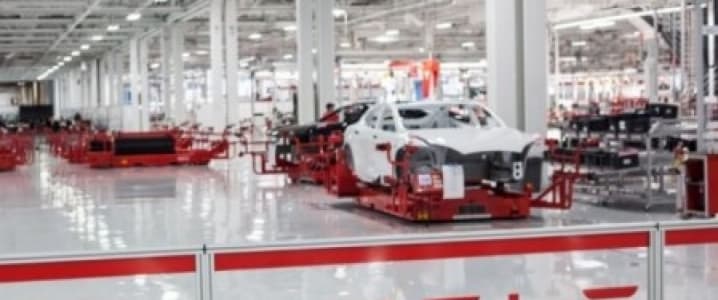The problem with today’s power grid isn’t the lack of electricity but rather the lack of it at certain times. The United States has progressively moved towards adding renewable energy to the grid but solar and wind power are rather intermittent. Worst of all, some of this power is completely wasted because our grid is unable to store it properly. Tesla, along with other companies, has begun to solve this pressing issue.
Three new storage plants are in the works and they’re unlike anything before. The plants will be completely reliant on lithium ion storage. Lithium powered batteries have seen rapid reductions in price in the past several year’s thanks to the high demand for electric cars. Tesla is also developing a gigafactory in Nevada to mass produce these batteries, some of which will be used in the storage plant. AES Corp. and Altagas Ltd. are the other two companies creating battery plants in California. The Altagas plant was activated January 27th. AES has another battery plant in Arizona scheduled to go online within the next several months as well as a project internationally in India.
These plants will reduce the number of blackouts due to power shortage at peak hours and prevent loss of power generated but not used. When it comes to renewables there’s virtually no carbon dioxide emission or risk of spills harming the environment. Electricity generated from renewables will be stored appropriately and reinforce the notion that our power grid really can go green.
This does not bode well for fossil fuel producers. Combustion plants using fossil fuels see this as an imposing threat to their industry. With 67 percent of our grid currently relying on nonrenewable energy, there could be a sizeable portion of market share up for grabs. The push to reduce climate change has governments betting on these batteries. President Trump, however, has promised to bring coal and crude production to a new level of activity. Economists are unsure how his policy will play out but all this guarantees oil producers is a little more sweet time before this inevitable adaptation. Related: Pipeline Approvals Could Put A Ceiling On Gas Prices
AES has remained steady while Altagas dropped $2.18 per share since the week of their plant’s opening. Even with these losses, investors should consider Altagas as well as AES. The projects show promises of growth but only a fraction of what’s expected of Tesla. The company’s stock has grown nearly $70 since December and analysts don’t see momentum slowing. Tesla’s plant is now online and the gigafactory is to be completed next year. Investors should see strong returns in Tesla’s stocks around these times, especially with a lot riding on the gigafactory’s planned opening.
It’s unlikely crude benchmarks will react towards this news but future plans may prove otherwise. Oil majors are beginning to worry when demand will peak, knowing that cloud may be just over the horizon. Investors shouldn’t concern themselves with an approaching downward trend yet and should continue to ride out the OPEC supply cuts.
By Michael McDonald of Oilprice.com
More Top Reads From Oilprice.com:
- U.S. To Sell 10 Million Barrels From Strategic Reserves This Month
- Permian Drilling Costs Surge: Are The Days Of Cheap Oilfield Services Over?
- Oil Prices Rise As OPEC Compliance To Cuts Hits 90%



















But keep this in mind, at steady state, an annual supply of 100 GWh offsets 1 mmb/d of fossil fuels. So the scaling up of Gigafactory 1 in Sparks, NV, to 150 GWh is like an oilfield that will eventually produce 1.5 mmb/d. The full impact of this will take a little over a decade to be felt, but it is huge.
Batteries change everything. From here out, it's batteries versus barrels.
The push to reduce climate change has governments betting on these batteries. President Trump, however, has promised to bring coal and crude production to a new level of activity.
Thank you.
One of two things will be true here:
1. Your estimate is far too high and it won't come close to happening.
2. You're characterizing a very small amount of battery storage as a "boom" when most observers would call it an "insignificant amount."
I'm guessing the latter. But please go ahead and quantify this boom so we can test your hypothesis later this year.